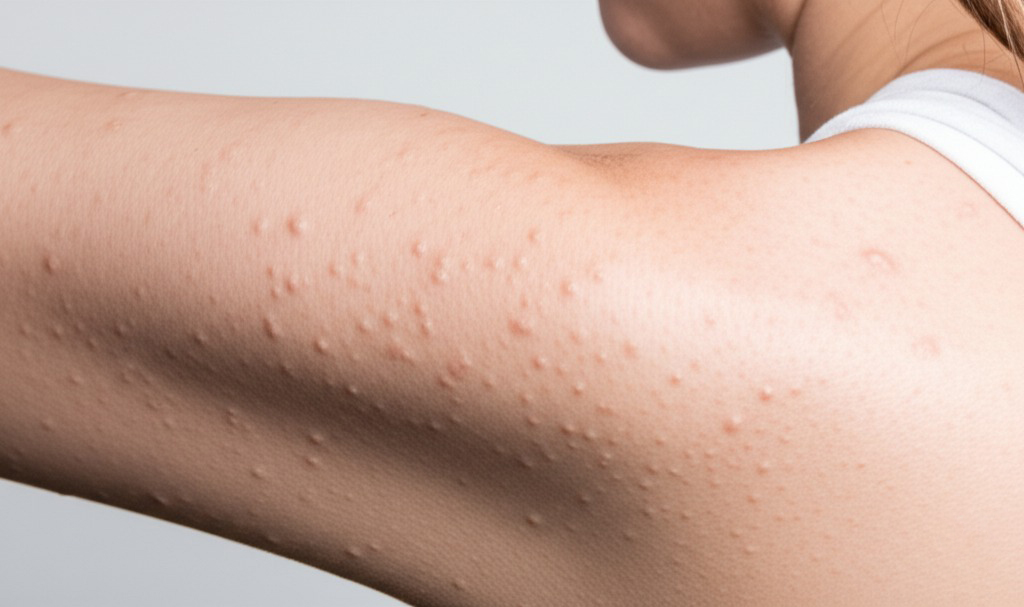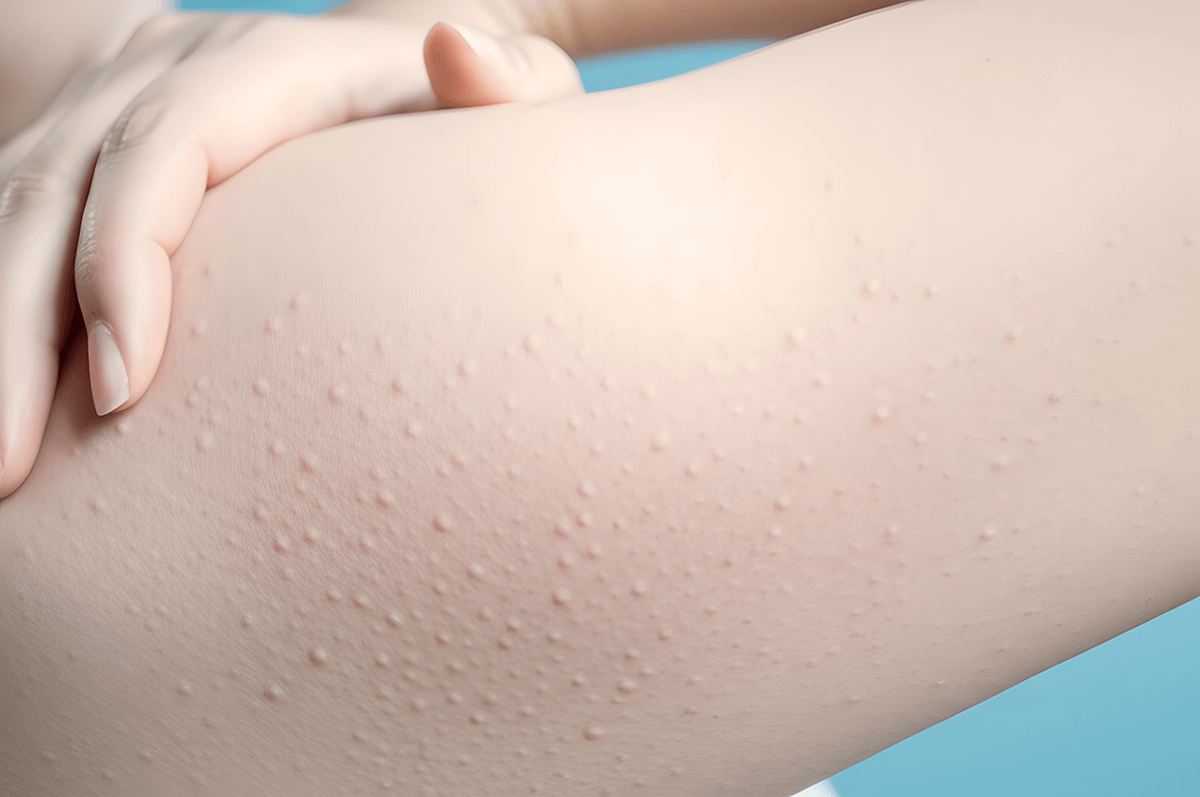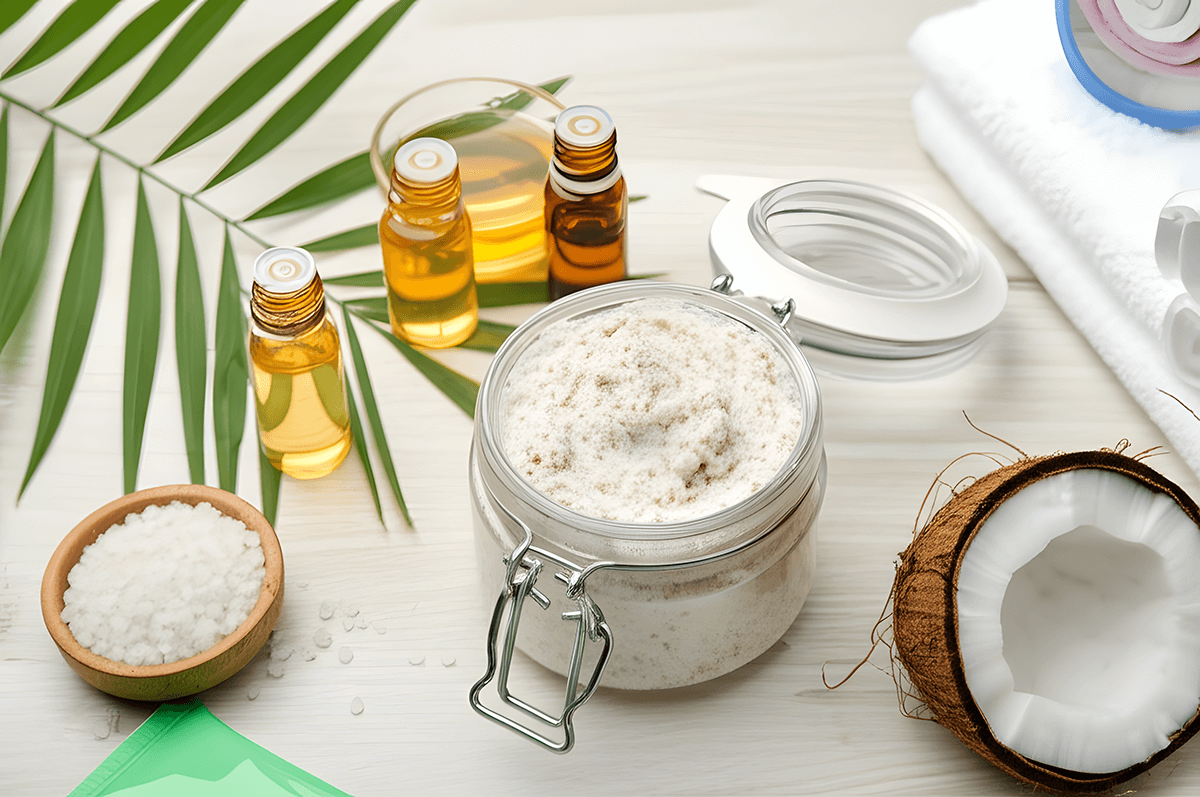Keratosis pilaris (KP), often called “chicken skin” or “goosebumps”, is a common skin condition that causes tiny, rough bumps on the arms, thighs, and other areas. While it’s harmless, many people struggle with the rough texture and dryness that come with it.
Contrary to popular belief, harsh scrubbing won’t fix KP—in fact, it can make it worse. Instead, the key to smoother skin lies in gentle exfoliation, proper hydration, and skin barrier support. In this guide, we’ll explore the best treatments for KP, including lactic acid, chemical exfoliants, and sensitive skin care techniques.
What Causes Keratosis Pilaris?
KP is caused by a buildup of keratin, a protein that protects the skin. When keratin clogs hair follicles, it forms small, rough bumps, often accompanied by dryness and redness.
Common Triggers:
- Genetics: KP often runs in families.
- Dry skin: Lack of moisture makes bumps more pronounced.
- Cold weather: Symptoms worsen in winter due to dry air.
- Harsh skincare: Scrubbing or using strong soaps can irritate KP-prone skin.
While there’s no permanent cure, the right routine can dramatically improve skin texture over time.
Why Harsh Scrubs Make KP Worse

Many people assume that scrubbing the bumps away will lead to smoother skin, but this often backfires. Physical exfoliants like loofahs, sugar scrubs, and rough brushes can cause micro-tears and inflammation, making KP more noticeable.
Solution: Instead of scrubbing, opt for chemical exfoliants that gently dissolve keratin buildup without damaging the skin.
The Best Ingredients for Treating KP
1. Lactic Acid (The Gold Standard for KP)
Lactic acid is an alpha-hydroxy acid (AHA) that gently exfoliates while keeping skin hydrated. Unlike harsh scrubs, it dissolves keratin plugs without causing irritation.
✔ Exfoliates and smooths rough bumps
✔ Retains moisture, preventing excessive dryness
✔ Ideal for sensitive skin
How to Use: Apply a lactic acid-based lotion (like AmLactin or CeraVe SA Lotion) daily after showering for best results.
2. Salicylic Acid (BHA for Deep Pore Cleansing)
Salicylic acid is a beta-hydroxy acid (BHA) that penetrates deeper into hair follicles, breaking down keratin buildupand reducing inflammation.
✔ Unclogs pores and reduces bumps
✔ Prevents future keratin buildup
✔ Best for those with acne-prone skin
How to Use: Look for salicylic acid body washes or lotions and apply 1-2 times a week.
3. Urea (Exfoliation + Deep Hydration)
Urea is a dual-action ingredient that softens keratin plugs while intensely hydrating dry skin.
✔ Gently exfoliates while keeping skin hydrated
✔ Prevents excessive flaking and tightness
✔ Best for extremely dry, sensitive skin
How to Use: Use a urea-based cream (10-20%) daily after showering.
4. Ceramides & Hydrating Ingredients
Since KP is often worsened by dryness, hydration is just as important as exfoliation. Ceramides, squalane, and hyaluronic acid help repair the skin barrier and keep moisture locked in.
✔ Strengthens skin’s natural protective barrier
✔ Prevents excessive water loss
✔ Reduces itchiness and irritation
How to Use: Always follow exfoliation with a ceramide-rich body lotion to keep skin healthy.
The Best Routine for Smoother Skin
Follow these dermatologist-approved steps for long-term improvement:
Step 1: Use a Gentle, Hydrating Cleanser
✔ Avoid harsh soaps that strip moisture.
✔ Look for pH-balanced body washes with hydrating ingredients.
✔ Avoid loofahs and rough washcloths—use your hands instead.
Step 2: Exfoliate Wisely
✔ Apply lactic acid or salicylic acid lotion once daily after cleansing.
✔ If using a chemical exfoliant, don’t use a scrub—stick to one method.
✔ Start slowly (2-3 times a week), then increase frequency based on tolerance.
Step 3: Lock in Moisture Immediately
✔ Apply a ceramide-rich body lotion within 3 minutes of showering.
✔ For extra hydration, apply a light layer of body oil before lotion.
Step 4: Be Consistent
✔ Results take time—expect improvement within 4-6 weeks.
✔ Stick to gentle, consistent exfoliation and hydration for long-term results.
Lifestyle Tips to Support KP Treatment
✔ Avoid long, hot showers—lukewarm water is best.
✔ Wear breathable fabrics—tight clothes can worsen KP.
✔ Use a humidifier in dry climates to prevent skin from drying out.
✔ Eat a balanced diet with omega-3s for skin health.
Conclusion: Gentle Care is Key
If you struggle with keratosis pilaris, the solution isn’t scrubbing harder—it’s about exfoliating smarter and hydrating deeply. By incorporating lactic acid, salicylic acid, and ceramide-rich moisturizers into your routine, you can soften rough bumps and achieve smoother, healthier skin.
Would you try this routine? Let us know your experience below!



